The first time I visited a client’s forestry site, I was stunned — wet soil, tangled roots, uneven slopes, and piles of logs everywhere.
A regular forklift wouldn’t survive ten meters in that environment. That’s when I realized: in forestry, the real enemy isn’t the workload — it’s the terrain.
Rough terrain forklifts1 in forestry are used for moving, loading, stacking, and transporting logs across muddy2, rocky, and sloped terrain.
They act as the bridge between the forest and the mill, improving both efficiency and safety.
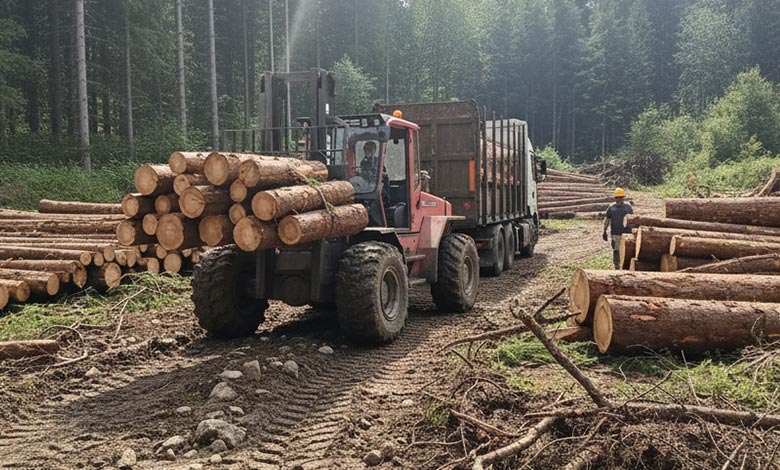
Let me share what I’ve learned from years of working with forestry clients — why these forklifts are not just helpful, but indispensable in the woods.
What’s the real challenge in forestry operations?
People often assume forestry is about “lifting logs,” but the real challenge is getting there in the first place.
Rough terrain forklifts1 handle steep slopes, wet ground, rocks, and roots — places regular forklifts simply can’t reach.
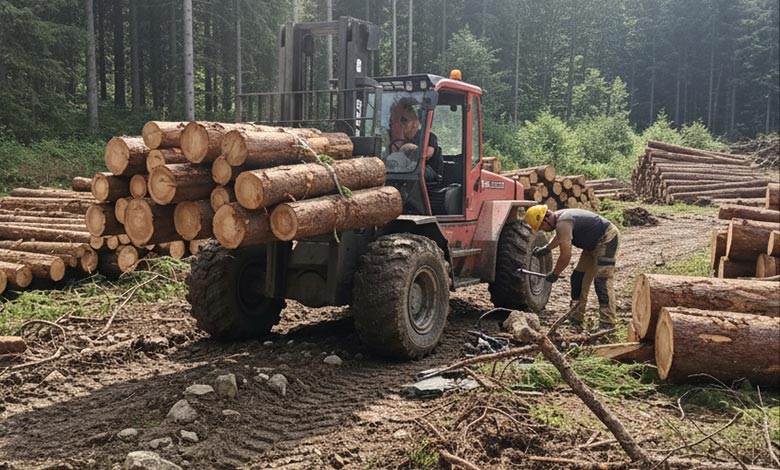
Forestry roads are rarely roads at all — they’re muddy, temporary trails that change with every rainfall.
A standard forklift will bottom out or get stuck in minutes.
A rough terrain forklift, on the other hand, uses 4WD, deep-tread tires, and high ground clearance3 to go where other machines can’t.
It doesn’t just move timber — it makes the jobsite accessible.
| Challenge Type | Standard Forklift | Rough Terrain Forklift |
|---|---|---|
| Mud & Soft Soil | Poor traction | Excellent grip |
| Hill Climbing | 5–8° | 15–20° |
| Stability on Uneven Ground | Unsteady | Balanced |
| Reliability | Frequent breakdowns | Continuous operation |
What kind of work do they actually do in forestry?
Most people picture forklifts inside warehouses — not deep in the woods. But in forestry, they’re involved from the moment the tree hits the ground.
Rough terrain forklifts1 handle every stage of forestry logistics: moving logs4 from felling points, loading trucks, and stacking timber in yards or mills.
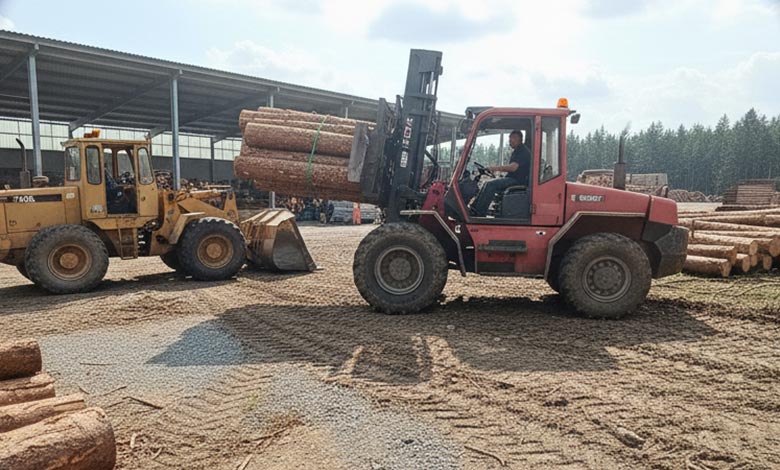
At felling sites, they move cut logs to collection zones.
In loading areas, they transfer timber onto trucks bound for mills.
At lumber yards, they stack, sort, and prepare logs for processing.
They’re the “first-mile logistics5” machine of forestry — without them, timber stays stuck in the forest.
| Operation Stage | Main Task | Key Advantage |
|---|---|---|
| Felling Site | Log gathering | Powerful traction |
| Loading Zone | Truck loading/unloading | Stability on rough ground |
| Sawmill Yard | Stacking and sorting | Flexible maneuverability |
Why are they more cost-effective than loaders?
Many forestry companies used to rely on small wheel loaders, but most have since switched to 4WD forklifts — and for good reason.
Rough terrain forklifts1 consume less fuel, are easier to maintain, and handle 80% of loader tasks at roughly half the cost.
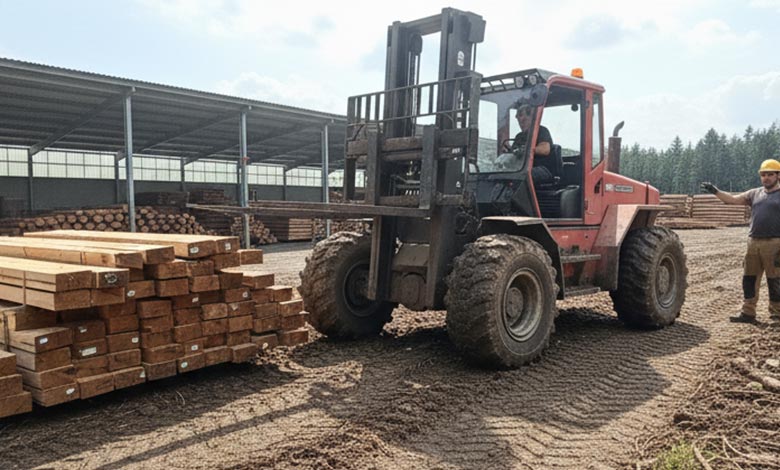
Loaders are strong but expensive to run — high fuel consumption6, complex hydraulics, and costly maintenance.
A modern 4WD forklift does most of the same work: it can grip, lift, and transport logs using various attachments like clamps or extensions.
For many forestry operations7, it’s like three machines in one — powerful, nimble, and economical.
| Comparison | Wheel Loader | Rough Terrain Forklift |
|---|---|---|
| Fuel Consumption | High | Low |
| Maintenance Cost | Expensive | Lower |
| Attachment Options | Limited | Multiple (log clamp, rotator, extension arm) |
| Maneuverability | Moderate | Excellent |
| Overall Cost | High | More economical |
Why is reliability even more critical in forestry?
Forestry doesn’t give second chances. If a machine breaks down halfway up a mountain, that’s not just inconvenient — it’s a nightmare.
Rough terrain forklifts1 are built for durability8, with reinforced frames and long maintenance cycles, minimizing downtime in remote environments.
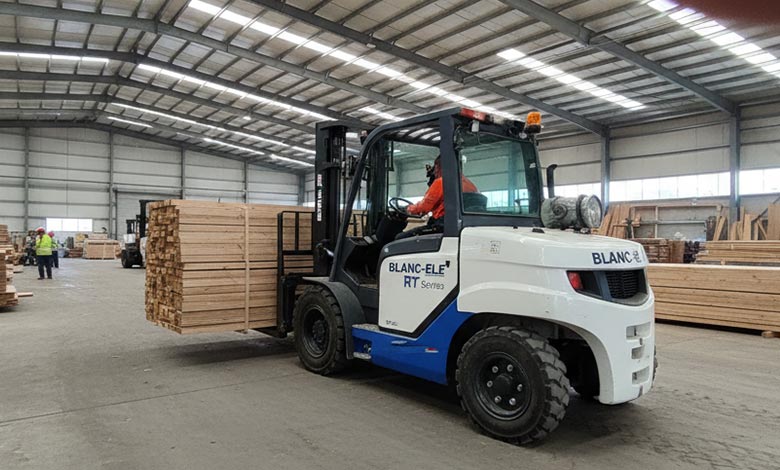
In the woods, every breakdown costs double — one for the repair, and one for the logistics of getting help out there.
A standard forklift isn’t designed for that abuse.
Rough terrain forklifts1, with their reinforced chassis, sealed drivetrains, and robust hydraulics, are built to work through it all.
For forestry operators, this isn’t about convenience — it’s about cash flow and survival.
| Cost Factor | Standard Forklift | Rough Terrain Forklift |
|---|---|---|
| Downtime | Frequent | Minimal |
| Maintenance Cycle | Short | Long |
| Component Durability | Moderate | Heavy-duty |
| Operational Continuity | Unstable | Reliable |
Is forestry ready for electric rough terrain forklifts?
More lumber companies are turning to electric9 or hybrid models — not just for regulations, but for practicality.
Electric rough terrain forklifts reduce emissions, noise, and maintenance, making them perfect for lumber yards and indoor wood-processing facilities.
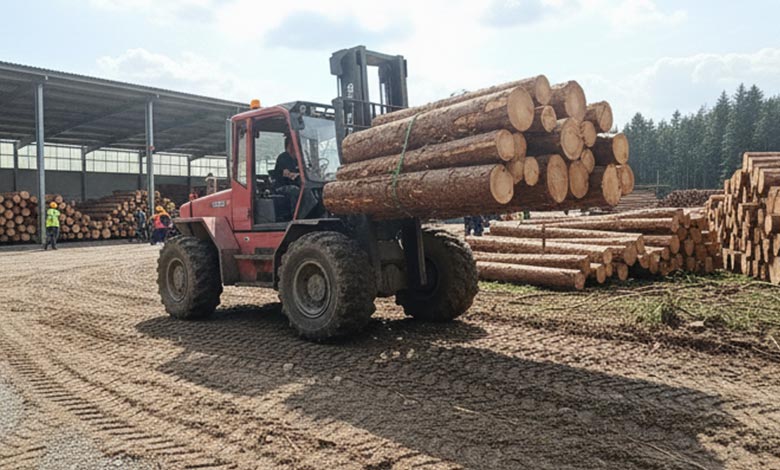
Diesel forklifts are noisy, smoky, and often banned in enclosed or residential-adjacent lumber yards.
Electric rough terrain forklifts keep the torque but lose the fumes — quiet, clean, and efficient.
At BLANC-ELE, our electric9 RT Series combines quick-charge systems with high-torque motors designed for uneven terrain, helping forestry operations7 go greener without sacrificing performance.
| Feature | Diesel Forklift | Electric Rough Terrain Forklift |
|---|---|---|
| Noise | High | Low |
| Emissions | CO₂ + fumes | Zero |
| Maintenance | Frequent oil changes | Minimal |
| Work Suitability | Outdoor only | Indoor + outdoor |
Conclusion
In forestry, a rough terrain forklift is the machine that gets where others can’t.
It doesn’t just move logs — it moves efficiency, safety, and profit.
To me, it’s not just equipment — it’s the power to turn the forest into deliverable value.
Explore how rough terrain forklifts enhance efficiency and safety in challenging forestry environments. ↩
Explore this resource to learn effective strategies for safely navigating and operating in muddy conditions, crucial for forestry operations. ↩
Learn how high ground clearance contributes to the effectiveness of forklifts in uneven terrain. ↩
Learn about the crucial role of forklifts in log transportation and their impact on productivity. ↩
Discover the importance of first-mile logistics and how it affects the timber supply chain. ↩
Understanding fuel consumption can help forestry companies make more economical choices. ↩
Understanding the challenges in forestry operations can help improve logistics and equipment choices. ↩
Discover the features that enhance the durability of forklifts in harsh forestry conditions. ↩
Explore how electric rough terrain forklifts enhance efficiency and sustainability in forestry, reducing emissions and maintenance costs. ↩
